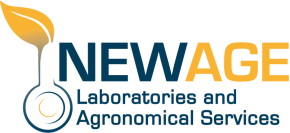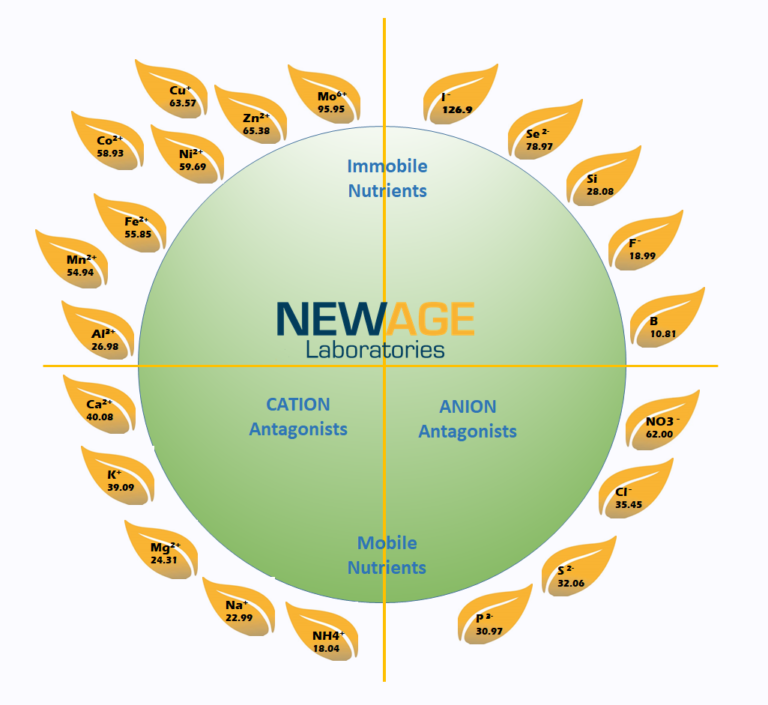NEWAGE Laboratories was founded in 1998 with a focus on environmental cleanups. Scott Wall, the company’s president, soon discovered a tremendous opportunity in the local agricultural sector.
“Not many people know this, but Michigan is very diverse agriculturally,” said Jenny Garley, chief science officer for NEWAGE Laboratories. “It’s huge in agriculture, and there’s so much water there. There are greenhouses, a large wine industry, blueberries, strawberries—you name it, it’s there. It’s a shorter growing season, of course, but very diverse.”

Scott Wall, President, NEWAGE Laboratories
The company, headquartered in South Haven, MI, provides accurate, usable, real-time data to the agricultural and food safety industries through its fixed laboratory with quick turnarounds. Its Food Safety Lab keeps growers, processors, and distributors informed on potential contamination threats and helps them navigate food safety regulations.
Garley explained how sap analysis is an important aspect of the company’s efforts.

“I work with agronomists; I work with fertilizer companies; I work with growers—anyone who has a foot in the agricultural industry,” she said. “I work with folks, whether it’s for trials or large-scale growers, they use sap analysis to make sure the products they’re ... applying are actually being taken up. We receive sap samples from all over the US. Sample volume has increased tremendously over the past two years, which I think is partially due to offering discount overnight shipping—clients save about 50-60 percent in shipping.”
With fertilizer prices currently skyrocketing, many companies are focusing on using NPK more efficiently. For sap analysis, NEWAGE Laboratories requires young, fully developed leaves and old but viable leaves as a sample pair to look at how nutrients are being taken up and mobilized within the plant.
“I work with folks, whether it’s for trials or large-scale growers, they use sap analysis to make sure the products they’re ... applying are actually being taken up. We receive sap samples from all over the US.” – Jenny Garley
“For mobile nutrients, if there’s more NPK or magnesium in a young leaf versus the older leaf, that indicates the plant is heading towards a deficiency as [it] is pulling that nutrient from the older leaves,” Garley said. “If there is less NPK or magnesium in younger leaves, that signifies the plant has reached its optimal level and is now saving the excess [nutrients] in its older leaves.”
The size of the nutrient surpluses in the old leaves gives growers insight into the inputs they could potentially cut back on.

Jenny Garley, Chief Science Officer, NEWAGE Laboratories
“Looking at nitrogen conversion is another service we offer,” Garley said. “It’s very popular with growers because we can measure nitrate and ammonium and compare those to total nitrogen to obtain a nitrogen conversion efficiency percent (NCE).”
NCE is important because it illustrates how efficiently plants are converting nitrogen to actual usable forms like amino acids and proteins. A low NCE of 50 means the plant is only using 50 percent of the nitrogen it's taking up.
The size of the nutrient surpluses in the old leaves gives growers insight into the inputs they could potentially cut back on.
NEWAGE Laboratories works with companies that deal in fresh organics and those in the sustainable and regenerative fields, along with conventional produce companies. Its customers include organic input companies, organic growers, and organic packing houses.

“[Companies] want the best produce to come into their packing house,” Garley said. “They want the best quality, so once they find something that works, they’re going to share it with all their growers, whether that’s input or whether that’s sap analysis. They want their growers to grow the best."
These processes can make a tremendous impact on a plant’s health. For example, Garley explained that increasing phosphorus results in more effective photosynthesis, bringing more sugar down to the soil through the roots, feeding the soil biology that in turn breaks down micronutrients.
 NEWAGE Laboratories sap wheel, an interpretation of competing nutrients in sap uptake
NEWAGE Laboratories sap wheel, an interpretation of competing nutrients in sap uptake
“That’s a very important relationship for plants and soil biology, the give-and-take,” Garley said. “And micronutrients help with making macronutrients more efficient. Plants are so smart. They interchange nutrients, so if they’re low on one nutrient, they will use another nutrient to fulfill that need.”
For example, if a plant is low on manganese, it can improvise and use magnesium, but that can require a lot of energy.
“A plant can use a lot of energy up on certain pathways—15, 20 percent even—and that’s a lot because you don’t have trace elements,” Garley said.
“Plants are so smart. They interchange nutrients, so if they’re low on one nutrient, they will use another nutrient to fulfill that need.” -Jenny Garley
In terms of the future growth of organic produce, educating young consumers is key in Garley’s opinion. She said that while young people are making efforts to support locally owned businesses, they are not educating themselves on organics, which leads to misperceptions as to what organic means.
“I see it firsthand, and I kind of laugh, but I do see the purchasing power of this up-and-coming generation, with Amazon and things of that nature,” she said. “I think we should have a better grasp of the different diversity of foods, how they are created, and how can we make our dollars count.”






